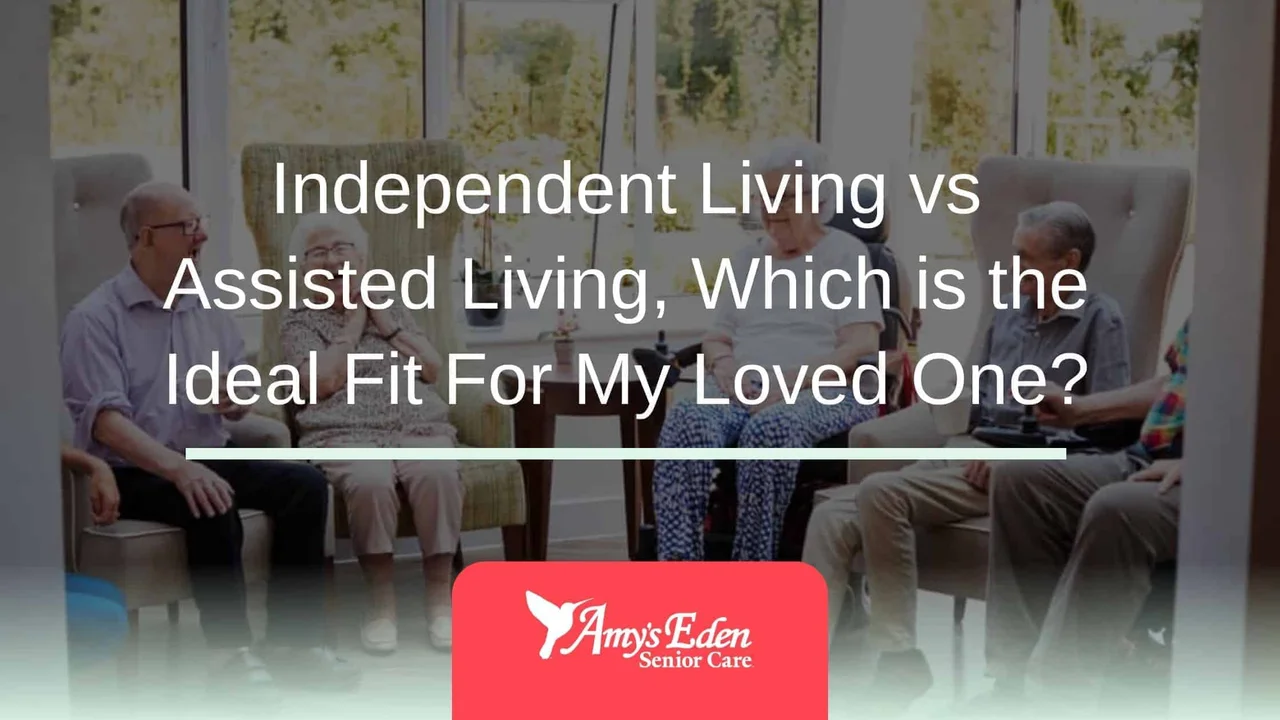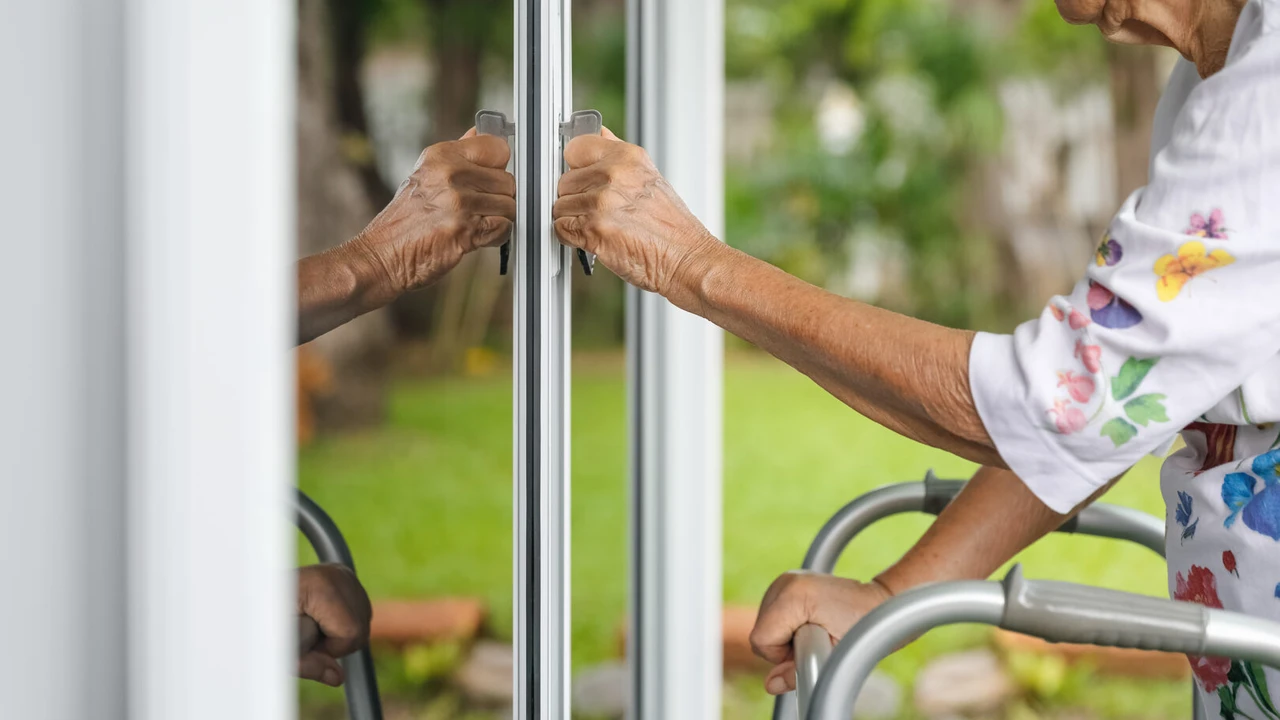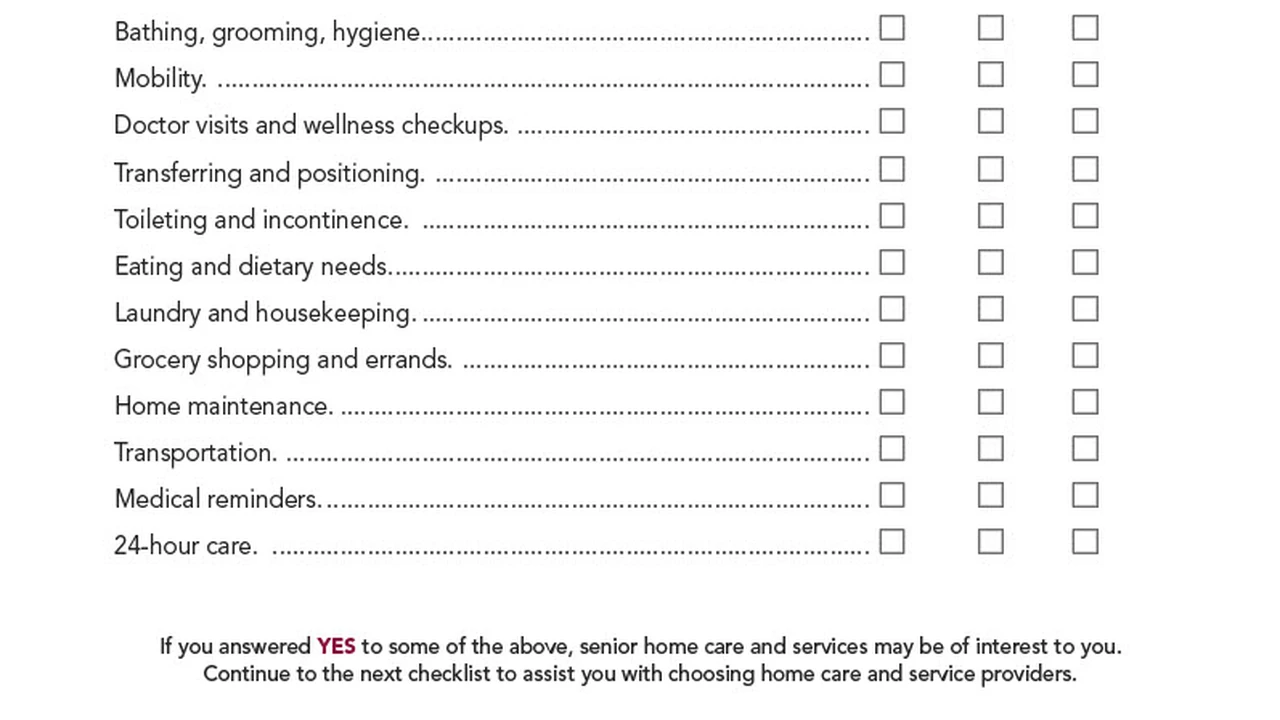Choosing Independent Living vs Assisted Living A Guide
Understand the differences between independent living and assisted living to make the right choice for your senior care needs.

Understand the differences between independent living and assisted living to make the right choice for your senior care needs.
Choosing Independent Living vs Assisted Living A Guide
Navigating the world of senior care options can feel like deciphering a complex puzzle. Two of the most common and often confused choices are independent living and assisted living. While both aim to provide a comfortable and supportive environment for older adults, they cater to very different levels of need and offer distinct lifestyles. Making the right decision for yourself or a loved one requires a clear understanding of what each option entails, who it's best suited for, and what factors you should consider.
This comprehensive guide will break down the nuances between independent living and assisted living, helping you identify which path aligns best with your current and future needs. We'll explore the services, amenities, costs, and overall philosophies of each, providing you with the knowledge to make an informed and confident choice.
Independent Living What It Is and Who It's For
Independent living communities are designed for seniors who are generally healthy, active, and capable of living on their own without daily assistance. Think of it as a vibrant, age-restricted community where residents enjoy a maintenance-free lifestyle, social opportunities, and a sense of security. The emphasis here is on independence, freedom, and an active social life.
Key Characteristics of Independent Living Communities for Active Seniors
- Autonomy and Freedom: Residents maintain full control over their daily routines, schedules, and activities.
- Maintenance-Free Living: Say goodbye to home repairs, yard work, and household chores. The community handles all maintenance, allowing residents more time for leisure.
- Social Engagement: These communities often boast a packed calendar of social events, clubs, classes, and outings, fostering a strong sense of community and combating loneliness.
- Amenities Galore: Expect a wide array of amenities such as fitness centers, swimming pools, libraries, game rooms, dining facilities, transportation services, and sometimes even golf courses or walking trails.
- Safety and Security: While not providing direct care, independent living communities typically offer secure environments, emergency call systems, and staff available for emergencies, providing peace of mind.
- Variety of Housing Options: You might find apartments, condominiums, townhouses, or even small single-family homes within an independent living community.
Who Thrives in Independent Living Exploring Ideal Candidates
Independent living is an excellent choice for seniors who:
- Are able to manage their personal care, medications, and daily tasks without assistance.
- Desire a vibrant social life and opportunities to connect with peers.
- Are tired of homeownership responsibilities and want a simpler, maintenance-free lifestyle.
- Are proactive about their health and well-being, seeking access to fitness and wellness programs.
- Value security and peace of mind in a community setting.
- Are looking to downsize and declutter their lives.
It's important to note that while independent living doesn't provide personal care, many communities have partnerships with home care agencies. This means that if a resident's needs change over time, they might be able to receive some in-home support without having to move to a different type of facility immediately.
Assisted Living What It Is and Who It's For
Assisted living facilities, on the other hand, are designed for seniors who need some level of daily assistance with activities of daily living (ADLs) but do not require the intensive medical care provided in a nursing home. The focus here is on providing support and supervision while still promoting as much independence as possible.
Key Characteristics of Assisted Living Facilities for Seniors Needing Support
- Personalized Care Plans: Each resident receives a customized care plan based on their individual needs, which can be adjusted as those needs change.
- Assistance with ADLs: This is the core service. Staff are available to help with tasks like bathing, dressing, grooming, toileting, and mobility.
- Medication Management: Trained staff can assist with medication reminders, dispensing, and monitoring to ensure residents take their prescriptions correctly.
- Meals Provided: Typically, three nutritious meals a day are provided in a communal dining setting, often with snacks available throughout the day.
- Housekeeping and Laundry: Regular housekeeping and laundry services are usually included, relieving residents of these burdens.
- 24/7 Supervision and Support: Staff are available around the clock to respond to emergencies and provide assistance.
- Social and Recreational Activities: While the focus is on care, assisted living communities also offer a variety of activities designed to engage residents and foster social interaction.
- Health Monitoring: Staff often monitor residents' general health and can coordinate with external healthcare providers.
Who Benefits Most from Assisted Living Exploring Ideal Candidates
Assisted living is a suitable option for seniors who:
- Need help with one or more activities of daily living (ADLs).
- Have difficulty managing their medications independently.
- Are at risk of falls or other safety concerns if living alone.
- Experience loneliness or social isolation and would benefit from a community environment.
- Have mild cognitive impairment and need some supervision or reminders.
- Are no longer able to safely or comfortably maintain their home.
- Have family caregivers who are becoming overwhelmed or need respite.
Assisted living provides a bridge between independent living and more intensive nursing home care, offering a supportive environment that adapts to evolving needs.
Comparing Independent Living vs Assisted Living Key Differences and Similarities
To further clarify the distinction, let's look at a direct comparison of key aspects:
Level of Care and Support Understanding the Core Distinction
- Independent Living: Minimal to no direct personal care provided. Residents are self-sufficient.
- Assisted Living: Provides hands-on assistance with ADLs, medication management, and 24/7 supervision.
Cost Structures and Financial Considerations for Senior Care
- Independent Living: Generally less expensive than assisted living. Costs typically cover rent, utilities, some meals, amenities, and activities. Often paid for privately or through long-term care insurance.
- Assisted Living: More expensive due to the higher level of care. Costs include rent, meals, utilities, personal care services, medication management, and activities. Primarily paid for privately, though some long-term care insurance policies, VA benefits, and limited Medicaid programs may cover some costs.
Amenities and Services Lifestyle and Daily Support
- Independent Living: Focus on lifestyle amenities (fitness centers, pools, social clubs, dining options) and maintenance-free living.
- Assisted Living: Focus on care services (ADL assistance, medication management, health monitoring) in addition to some social activities and dining.
Housing Options and Living Arrangements Community Design
- Independent Living: Wider range of housing types, from apartments to cottages, often with full kitchens.
- Assisted Living: Typically private or semi-private apartments, often with kitchenettes rather than full kitchens, designed for ease of access and safety.
Staffing and Supervision Professional Care Teams
- Independent Living: Staff primarily for maintenance, hospitality, activities, and emergency response.
- Assisted Living: Includes trained caregivers, nurses (or access to nursing services), and staff specifically for personal care and health monitoring, available 24/7.
Making the Right Choice for Your Senior Care Needs A Step-by-Step Guide
Deciding between independent living and assisted living is a significant decision that requires careful thought and planning. Here's a step-by-step approach to help you navigate the process:
Step 1 Assess Current and Future Needs Comprehensive Evaluation
Start by honestly evaluating the senior's current physical and cognitive abilities. Can they:
- Manage their medications independently?
- Bathe, dress, and groom themselves without assistance?
- Prepare nutritious meals?
- Handle household chores and maintenance?
- Drive or arrange transportation for appointments and errands?
- Manage their finances?
- Maintain social connections?
Consider not just today's needs but also potential future needs. If there's a progressive condition, assisted living might be a more forward-thinking choice. Consulting with a doctor or geriatric care manager can provide an objective assessment.
Step 2 Consider Lifestyle Preferences and Social Desires Community Fit
What kind of lifestyle does the senior desire? Do they:
- Crave an active, social environment with many organized activities? (Independent Living)
- Prefer a quieter, more supportive setting where help is readily available? (Assisted Living)
- Value privacy and autonomy above all else?
- Enjoy communal dining and group outings?
The social aspect is crucial for well-being. Ensure the chosen community aligns with their personality and preferences.
Step 3 Evaluate Financial Resources and Budget Planning for Costs
Understand the costs associated with both independent and assisted living in your desired geographic area. This includes:
- Monthly fees (rent, services, care levels)
- One-time entrance fees (common in some independent living and CCRC models)
- Additional charges for specific services
- Potential for future cost increases
Explore all potential funding sources: private savings, pensions, Social Security, long-term care insurance, VA benefits, and potentially Medicaid (for assisted living, though coverage varies significantly by state).
Step 4 Research and Tour Communities Due Diligence and Site Visits
Once you have a clearer idea of the appropriate level of care, start researching communities. Look at:
- Location: Proximity to family, friends, doctors, and familiar places.
- Reputation: Read reviews, check state licensing reports, and ask for references.
- Staff: Observe staff-resident interactions. Are they friendly, engaged, and professional?
- Cleanliness and Safety: Is the facility well-maintained, clean, and secure?
- Activities and Programs: Do they offer engaging activities that align with the senior's interests?
- Dining: Sample a meal if possible. Are the meals nutritious and appealing?
Tour multiple communities, ask lots of questions, and ideally, visit during different times of the day to get a full picture.
Step 5 Involve the Senior in the Decision-Making Process Empowering Choice
Unless cognitive impairment prevents it, the senior should be an active participant in this decision. Their input, preferences, and feelings are paramount. This fosters a sense of control and makes the transition smoother.
Recommended Products and Services for Senior Living Enhancing Comfort and Safety
Beyond the community itself, various products and services can enhance the comfort, safety, and independence of seniors, whether in independent living, assisted living, or even at home. Here are a few categories and specific examples:
Smart Home Technology for Seniors Safety and Convenience Solutions
Smart home devices can offer significant benefits, especially for seniors who value independence and security.
- Medical Alert Systems (Personal Emergency Response Systems - PERS): These devices provide immediate access to help in an emergency.
- Product Example: Life Alert
- Use Case: A senior falls and cannot reach their phone. Pressing a button on their pendant or wristband connects them to a monitoring center that dispatches emergency services or contacts family.
- Comparison: Many brands exist (e.g., Medical Guardian, Bay Alarm Medical). Life Alert is well-known for its direct connection to emergency services. Some systems offer fall detection, GPS tracking, and two-way communication. Prices vary from $20-$60 per month, with some requiring equipment purchase.
- Price Range: Monthly subscriptions typically range from $29.95 to $69.95, with potential one-time equipment fees.
- Smart Speakers (Voice Assistants): Devices like Amazon Echo or Google Home can help with reminders, calls, entertainment, and even controlling other smart devices.
- Product Example: Amazon Echo Dot (5th Gen)
- Use Case: A senior can ask Alexa to set medication reminders, call a family member, play music, or get weather updates, all hands-free.
- Comparison: Google Nest Mini offers similar functionality. Amazon's ecosystem often integrates with more third-party smart home devices.
- Price Range: $49.99 - $99.99 (one-time purchase).
- Smart Lighting: Automated lighting can improve safety and convenience.
- Product Example: Philips Hue Smart Bulbs and Bridge
- Use Case: Lights can be programmed to turn on automatically at dusk, or a senior can control them with their voice, reducing the risk of falls in the dark.
- Comparison: Many brands (e.g., Sengled, Govee) offer smart bulbs. Philips Hue is known for its reliability and wide range of products.
- Price Range: Bulbs typically $15-$50 each, bridge around $60 (one-time purchase).
Mobility Aids and Accessibility Solutions Enhancing Independence
For seniors with mobility challenges, these products can make a significant difference in their ability to navigate their environment safely.
- Rollators and Walkers: Provide stability and support for walking.
- Product Example: Drive Medical Rollator Walker with Seat
- Use Case: A senior needs extra support while walking around their independent living apartment or during outings, with the added benefit of a seat for resting.
- Comparison: Walkers offer basic stability, while rollators add wheels and often a seat. Different models offer varying weight capacities, wheel sizes, and features like hand brakes.
- Price Range: $70 - $250.
- Grab Bars: Essential for safety in bathrooms and other areas where falls are common.
- Product Example: Moen Home Care Grab Bars
- Use Case: Installed in showers, next to toilets, or by stairways to provide a secure handhold for balance and support.
- Comparison: Permanent, screw-in grab bars are generally more secure than suction-cup models. Various lengths and finishes are available.
- Price Range: $20 - $80 per bar (plus installation).
- Stair Lifts: For multi-level homes or apartments, a stair lift can eliminate the barrier of stairs.
- Product Example: Acorn Stairlifts
- Use Case: A senior living in an independent living cottage with stairs can safely access both levels of their home without risk of falling.
- Comparison: Brands like Bruno and Stannah also offer reliable stair lifts. Customization for curved staircases is available but more expensive.
- Price Range: $2,500 - $10,000+ (including installation, varies by staircase type).
Health and Wellness Monitoring Devices Proactive Care
These devices help seniors and their caregivers monitor vital health metrics and manage conditions.
- Automatic Pill Dispensers: Ensure medications are taken on time and in the correct dosage.
- Product Example: MedMinder Automatic Pill Dispenser
- Use Case: A senior with multiple medications needs reminders and controlled access to prevent missed doses or overdosing. The device can alert family if doses are missed.
- Comparison: Simple pill organizers are manual. Automated dispensers offer alarms, locking mechanisms, and remote monitoring.
- Price Range: $50 - $300 (one-time purchase) plus potential monthly monitoring fees ($20-$50).
- Blood Pressure Monitors: Easy-to-use devices for regular blood pressure checks.
- Product Example: Omron Platinum Blood Pressure Monitor
- Use Case: A senior with hypertension can easily monitor their blood pressure at home and share readings with their doctor.
- Comparison: Many brands offer accurate monitors. Look for cuff size, memory storage, and ease of use. Some connect to smartphone apps.
- Price Range: $50 - $100.
- Wearable Health Trackers: Smartwatches and fitness trackers can monitor heart rate, activity levels, and even detect falls.
- Product Example: Apple Watch SE (with Fall Detection)
- Use Case: An active senior wants to track their fitness, receive heart rate alerts, and have the added safety feature of fall detection that can automatically call emergency services.
- Comparison: Fitbit and Garmin offer fitness-focused trackers. Apple Watch integrates well with other Apple devices and offers robust health features.
- Price Range: $249 - $429 (one-time purchase).
The Continuum of Care Understanding Future Transitions
It's important to view senior living options as a continuum. Many seniors start in independent living, and as their needs evolve, they may transition to assisted living, and potentially later to memory care or skilled nursing. Some communities, known as Continuing Care Retirement Communities (CCRCs), offer all these levels of care on one campus, allowing residents to age in place without having to move to a new location as their needs change. This can provide significant peace of mind for both seniors and their families.
When making your initial decision, consider whether the chosen independent or assisted living community has pathways to higher levels of care, either on-site or through established partnerships. This foresight can simplify future transitions and reduce stress.
Final Thoughts on Senior Living Choices Empowering Your Decision
Choosing between independent living and assisted living is a deeply personal decision, influenced by individual needs, preferences, and financial circumstances. There's no single 'right' answer, only the best fit for a particular senior at a particular time. By thoroughly assessing needs, exploring options, and involving the senior in the process, families can make a choice that promotes well-being, independence, and quality of life.
Remember, the goal is to find an environment where seniors can thrive, feel secure, and continue to live a fulfilling life, regardless of the level of support they require. Take your time, ask questions, and trust your instincts to find the perfect place to call home.
:max_bytes(150000):strip_icc()/277019-baked-pork-chops-with-cream-of-mushroom-soup-DDMFS-beauty-4x3-BG-7505-5762b731cf30447d9cbbbbbf387beafa.jpg)






